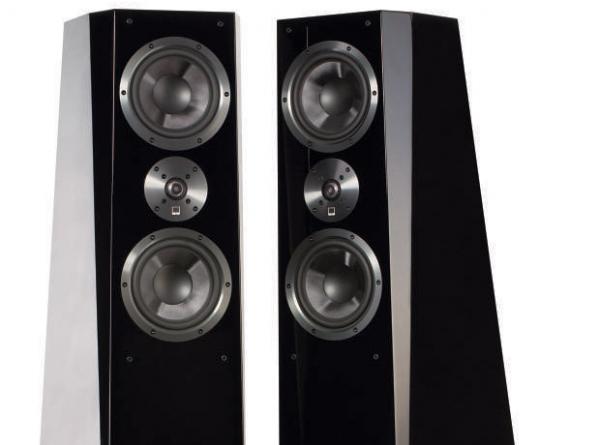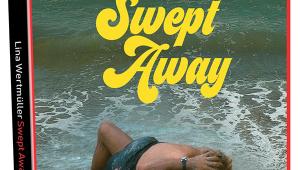Test Report: SVS Ultra Tower Surround Speaker System

Two years ago, SVS changed ownership, and you could say it’s simultaneously a remarkably unchanged yet very different firm. It’s unchanged in that many old hands are still with the company, and the concentration on high-performance home theater products remains. But it’s different in two major ways: It’s now making products in China, and it has expanded beyond subwoofers with a full line of speakers.
True, SVS did offer speakers in the past, but even though they were pretty good, the company always kept its attention on frequencies below 80 Hz. Now with the addition of Mark Mason — an ex-PSB engineer who does his testing in the anechoic chamber at Canada’s National Research Council in Ottawa — SVS is getting serious about full-range sound.
Even a quick look at the new Ultra Tower reveals it’s no me-too product. All but the top and bottom surfaces are non-parallel to minimize internal standing waves. The walls incorporate 1- and 1.5-inch-thick slabs of medium-density fiberboard (MDF), so even the large side panels return nothing more than a dead “thunk” when you rap a knuckle against them. Not bad for $999/each.
The Tower’s driver complement includes two 8-inch woofers that handle everything below 160 Hz, two 6.5-inch midrange drivers (the bottom one handling only frequencies up to 700 Hz), and a 1-inch tweeter reproducing everything above 2 kHz. Just looking at those crossover points tells me Mason knows what he’s doing. He filtered the woofers at a frequency low enough so that their narrow midrange dispersion won’t affect voice reproduction. He low-pass-filtered the bottom midrange so it wouldn’t interfere with the top midrange at higher frequencies. And he crossed over the tweeter at a frequency low enough so that the 6.5-inch mid’s narrow dispersion at high frequencies wouldn’t create “cupped hands” distortion, which makes singers sound like they have their hands cupped around their mouths. It’s all just basic speaker design stuff, but anyone who reads the Extended Lab Notes here on soundandvisionmag.com knows how often speaker engineers get the crossover wrong.
The $699 Ultra Center speaker borrows the tweeter and midranges from the Tower, but it adds a 4-inch midrange between the two 6.5s. Here’s why: With the 4-incher tasked with handling the mids from 500 Hz on up, the 6.5s can’t produce the off-axis interference patterns common to woofer/tweeter/woofer center speakers.
While you could use the company’s $499/each Ultra Bookshelf as your surround speakers, SVS instead sent me the $599/each Ultra Surround, which incorporates two speakers, each with a 5.5-inch woofer and a 1-inch tweeter. You can configure the Ultra Surround three ways. The standard connection is bipolar, with both sides in phase to give a more directional surround effect. SVS provides jumpers that let you wire it for dipolar operation, so the two halves are out-of-phase for a more spacious surround effect. Or you can wire each half directly to do 7.1-channel surround sound without having to add a second set of surround speakers — a configuration I found more compelling than 5.1 but not quite like having an extra set of rear speakers.
Although SVS offered to include a subwoofer with my test system, I wanted to hear what the Tower could do on its own. Search this website for “SVS” and you’ll find reviews of numerous SVS subs.
Setup
Except for the Ultra Surround, there’s nothing unusual going on with this system that warranted any special setup. I placed the Ultra Towers to the left and right of my projection screen, leaving about 2 feet between the backs of the speakers and the wall behind them. Experimenting with the toe-in angle, I liked the sound best with each speaker pointed almost, but not quite, straight at me. The Ultra Center ended up sitting under the center of my screen on a pair of 28-inch-high stands. I jettisoned the grilles on both it and the Towers.
The Ultra Surround is intended for wall-mounting, which I simulated by placing each speaker atop a 5-foot-high stand directly against the wall. I used them mostly in bipole mode (which I prefer to dipole) in a 5.1 setup but also tried hooking them up in 7.1, with each half driven separately.
With my Outlaw Model 975 surround processor set up to deliver full-range sound to the Towers and filter out everything below 80 Hz from the Center and Surrounds, I was ready to listen.

























































